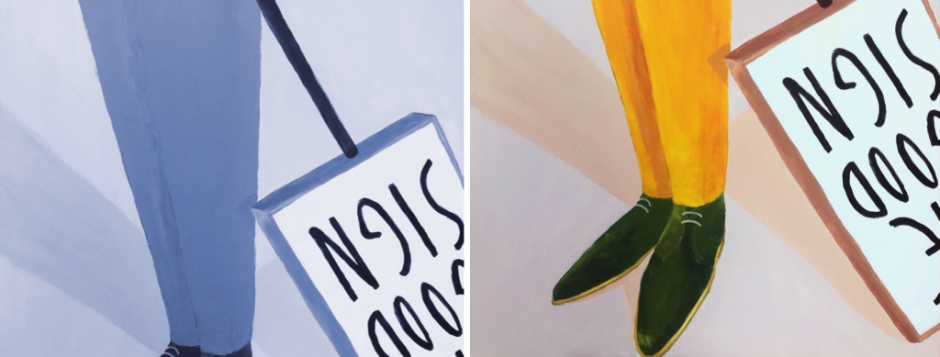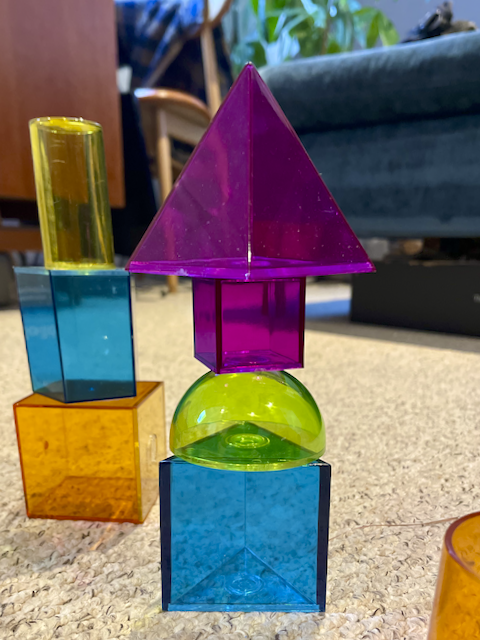What are meaningful connections betweenMA Innovative Fashion Production (MA IFP) students and students from other MA courses within the School of Design and Technology, and do they increase the students’ feeling of belonging to the UAL community?
I settled on this latest version of my research question because I found that by addressing this question, subsequent design for facilitating activities or learning materials can be more targeted to the students’ needs based on the findings. Further, the question is not too limiting nor has it been asked before within the stated context. Lastly, it allows to be addressed within the given time frame of the action research project.
By maintaining a curious mind about the research question – its importance highlighted by White (2009) – I adjusted the research question throughout the first 7 weeks of the project until I started the question planning for the focus group, which were customised to finding a breadth of perspectives to the research question.

Fig. 2 My notes: development of the research question (2025)
Research question development
Initial flaw no 1
Without realising, I assumed that they all wanted to connect to other MA students because of the result of the student survey result. However, the student survey result does not elicit why they wanted to connect to other MA students. What I assumed was that, like me, a recent student on the same course, they would be interested to meet other MA students with a similar topic or an overlap of interest. Without knowing why, withouth knowing their motivation the intervention design was informed based on my own motivation and possible ideas of how to approach it. I realised I was jumping ahead. I wanted to create a workshop with the assumption that I know what student wanted.
Initial flaw no 2
I didn’t realise that not everyone relates belonging to having a healthy network of people. For me, this was so clearly correlated based on my own life experiences that, again, I jumped ahead to an assumption that this link should be obvious. I was neither able to explain it well enough nor had I evidence for this claim.
This came to light when I presented my research question and project idea in the first tutorial to my academic practice peers where I was given feedback by one peer that they couldn’t see how networking relates to increasing students feeling of belonging. “How does a feeling of belonging come from a network?” She saw it as two contradictory ends non-related.
But because I didn’t know what their ideas and thoughts about networking are. Are their preconceptions the same that we have in the global West? What is their idea of a meaningful network? What do they seek? This made me think and rephrase my research question to asking the students what meaningful connections are to them and what it would take for them to think back to their study time and have a sense of belonging to a student community.
[Preliminary intervention design]
[I designed my preliminary intervention session so that students could think about who they wanted to connect to during the MA project, think about experts they would like to meet based on their projects orientation. I invited a guest speaker who gave insightful examples of how the people he got to know during the study time were supporting him with advice and recommendations, even after the course had finished. His positionality was chosen so that students could identify themselves with him.]
References
Bell, J. (2010). Doing Your Research Project: A Guide for First-time Researchers in Education, Health and Social Science. 5th ed. Maidenhead: McGraw-Hill Open University Press, p. 30. Available at: https://www-vlebooks-com.arts.idm.oclc.org/Product/Index/155387 (Accessed: 16 November 2025).
Punch, K.F. (2016). Developing Effective Research Proposals. 3rd ed. Los Angeles: SAGE, p. 47. ISBN 9781473916388.
White, P. (2009) Developing Research Questions. London: Palgrave Macmillan.

Above left to right: Reading notes on Bell, J. (2010), p.30


